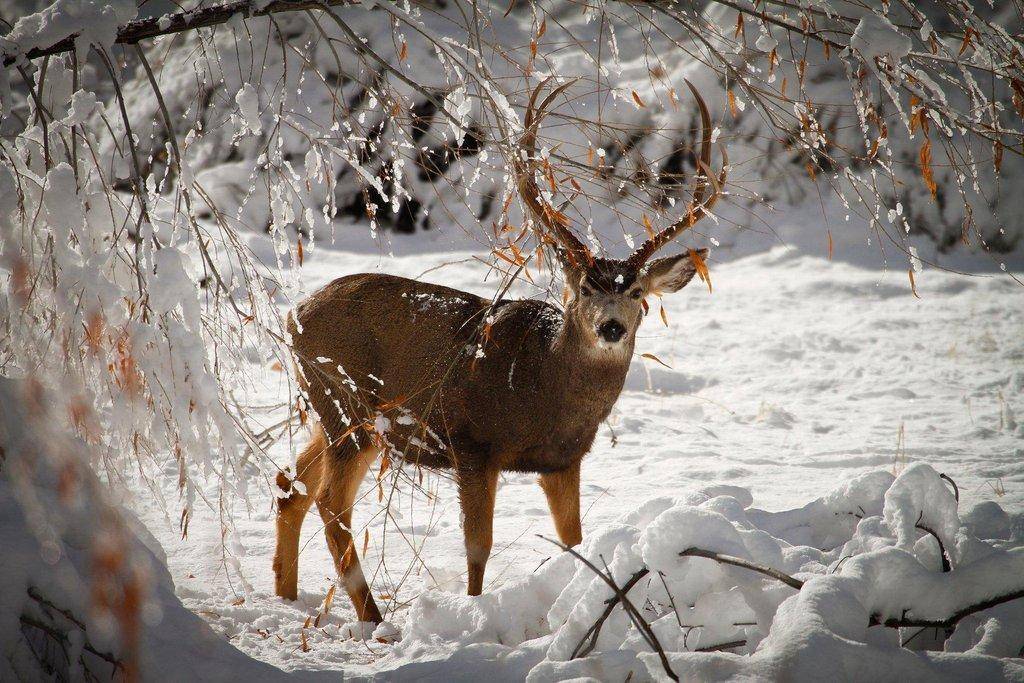Winter is a great time to see mule deer — and lots of them.
Herds that number more than 100 deer are often seen near major roads in Utah. While it’s exciting to see deer in the winter, please remember that winter is also the toughest time of the year for deer.
During the day, deer spend most of their time relaxing near trees that keep them hidden from view.В But as the sun starts to set in the early evening, the deer leave the cover of the trees and move onto the open flats where their food is found. Driven by hunger, the deer usually approach the unprotected areas timidly.В Finally, a few brave individuals move in to feed, followed by the entire herd.
The food that’s available to deer in the winter doesn’t have much nutrition in it. Combine the limited nutritional value with the fact that deer can’t store much fat on their bodies, and you can see why it’s important that deer are allowed to feed relaxed and undisturbed in the winter.
The Division of Wildlife Resources encourages you to get out this winter and see Utah’s mule deer. By following the guidelines below, you can help ensure your viewing experience is a good one for both you and the deer:
- Stay in your vehicle. Deer are used to seeing cars and trucks, and they don’t tend to be alarmed much by their presence. If you get out of your vehicle and move around, you’ll frighten the deer. That will cause them to burn precious energy reserves as they run away from you.
- Never allow dogs to run free around deer. Many dogs will be tempted to chase the deer. And that will cause the deer to waste important energy reserves running away from your dog. If you’re going to view deer, you should probably leave your dog at home.
- Bring a spotting scope, binoculars or a good telephoto lens for your camera.В The more powerful your optics, the better.
- If you move to secondary or frontage roads, you can often get closer to deer without alarming them.
- Deer tend to move a lot when they eat.В With a little observation, you can often determine the direction in which they’re moving.В If you select a position that’s in the direction the deer are moving, the deer might move closer to you.В If you’re taking photos just before sunset — which is the time of day that provides the best light — you can come away with some spectacular photographs.
В

